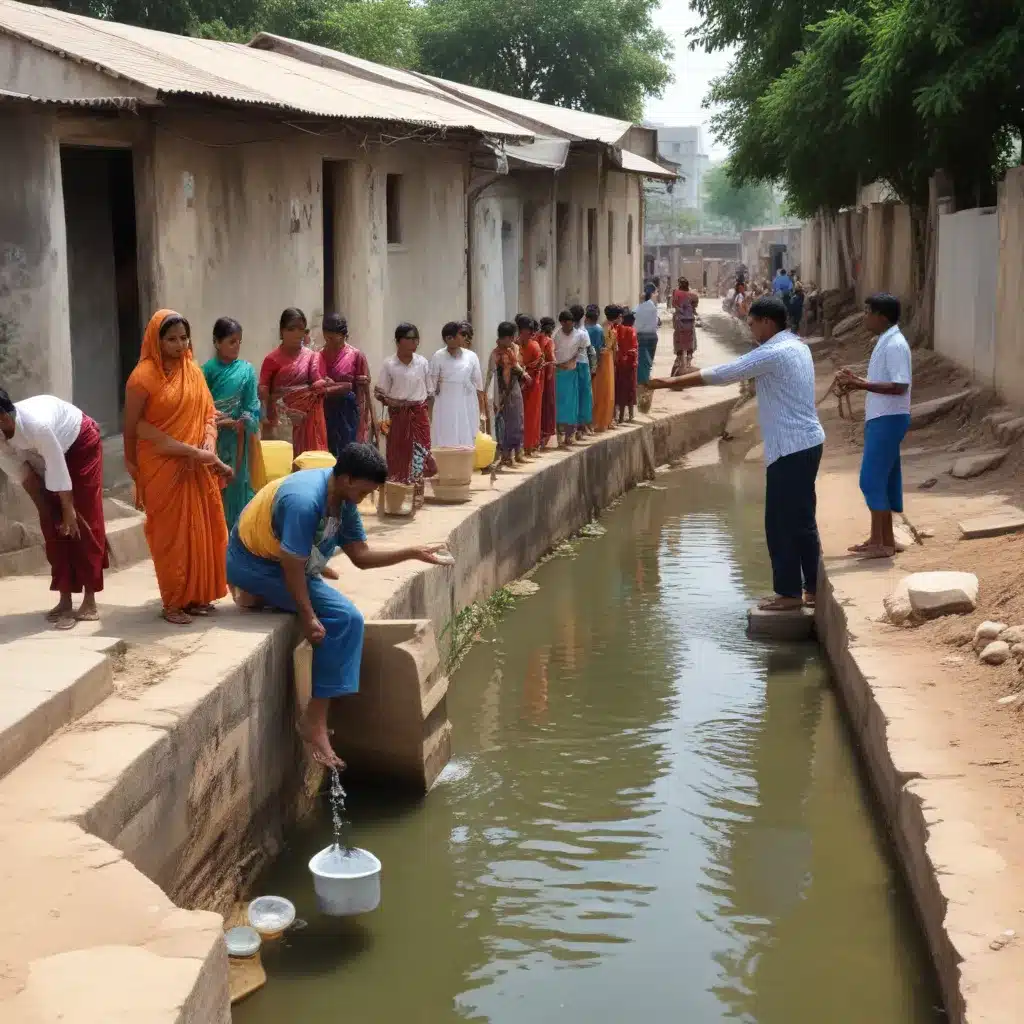
Addressing the Water Crisis Through a Holistic Approach
India is facing a severe water crisis, with over 600 million people, mostly from underserved rural communities, facing high to extreme water stress. Providing water security to this massive population requires a radical departure from the status quo, and adopting a holistic “One Water” approach can be the solution.
The Tata Water Mission’s (TWM) One Water framework aims to reimagine the way water is managed in its intervention areas across the country. By viewing this critical resource through a comprehensive lens, the framework integrates the entire water value chain – from source sustainability to final water supply – to ensure sustainable availability of water for communities.
The One Water Approach: Five Pillars for Lasting Impact
The implementation of the One Water approach follows a ‘first principles’ approach, focusing on understanding the water needs of communities, the available water resources, and how to effectively, efficiently, and sustainably bridge the requirement-availability gap. The framework has five key pillars:
-
Restore and Recharge Water Availability: Interventions to restore, recharge, and replenish primary water sources like groundwater and surface water through measures such as spring rejuvenation, rainwater harvesting, and recharge ponds.
-
Operate and Maintain Drinking Water Supply Systems: Ensuring the proper management of water availability and infrastructure, as well as training communities to own, operate, and maintain these systems sustainably.
-
Preserve and Enhance Water Quality: Identifying affordable solutions to address water contamination and building a supply chain management ecosystem for water purification.
-
Reduce and Reform Water Demand: Launching interventions to reduce agricultural water demand and inculcate water conservation behaviors to free up more water for drinking and domestic use.
-
Ensure Continuance of Safe Sanitation, Hygiene, and Waste Management: Sustaining the gains made in sanitation and hygiene, including promoting toilet usage, setting up entrepreneurial solid and liquid waste management systems, and addressing menstrual hygiene management.
Driving Behavior Change for Lasting Impact
While infrastructure and technological advancements play crucial roles in improving water accessibility, the success of water security projects ultimately hinges on individual and community behavior. To address this, the Tata Trusts have implemented a Social Behavioural Change Communication (SBCC) campaign – Samman Connection.
The Samman Connection campaign encourages rural communities to take charge of their ‘sehat’ (health) and ‘samay’ (time) by using the convenient tap water connections now available in their homes. The multimedia, multi-lingual campaign taps into the universal truth that everyone wants to be respected and live a good life, irrespective of class, caste, age, and gender.
By partnering with local organizations, schools, and community leaders, the campaign reaches the community directly, driving behavioral shifts at the grassroots level. The campaign also empowers children as ambassadors for safe drinking water, using engaging comic books and videos to promote water conservation and hygiene habits.
Enhancing Water Quality in Hyderabad
The Tata Water Mission’s One Water approach is being implemented in various parts of the country, including the city of Hyderabad. In Hyderabad, the mission is focusing on several key interventions to improve water quality and sanitation:
Restoring and Recharging Water Availability: The mission is reviving springs, augmenting rainwater discharge, and constructing recharge ponds and pits through community-led springshed management. These measures help replenish the city’s primary water sources.
Ensuring Sustainable Drinking Water Supply: The mission is working to improve the operation and maintenance of drinking water supply systems, reducing leakages and wastage to ensure efficient water delivery. It is also providing safe drinking water to institutional structures like schools and healthcare facilities.
Improving Water Quality: The mission is identifying affordable solutions to address water contamination, such as iron, salinity, arsenic, and fluoride. It is also building a sustainable supply chain for water purification products to ensure year-round availability.
Promoting Sanitation and Hygiene: The mission is continuing its behavior-change initiatives to encourage toilet usage and proper waste management. It is also exploring entrepreneurial models for solid and liquid waste management and addressing menstrual hygiene challenges.
Empowering Communities: The Samman Connection SBCC campaign is being implemented in Hyderabad to mobilize communities, raise awareness, and promote behavioral shifts towards safe water, sanitation, and hygiene practices.
By adopting a holistic, community-centric approach, the Tata Water Mission’s One Water framework is creating a healthier and more water-secure future for the people of Hyderabad. Through infrastructure development, technology innovations, and behavior change interventions, the mission is tackling the complex challenge of water management in a sustainable manner.
Learn more about the Tata Water Mission’s work and the Joint Action for Water initiative at https://jointactionforwater.org/.
Conclusion
The water crisis in India demands a comprehensive solution that addresses the entire water value chain. The Tata Water Mission’s One Water approach provides a blueprint for achieving sustainable water security by integrating infrastructure development, technological innovations, and community-driven behavioral changes.
By restoring water sources, ensuring reliable drinking water supply, improving water quality, reducing demand, and promoting sanitation and hygiene, the One Water framework is empowering communities to take charge of their water future. The Samman Connection campaign further reinforces this approach by driving lasting behavior change at the grassroots level.
As the Tata Water Mission continues to implement the One Water strategy in Hyderabad and other parts of the country, it offers a promising model for other organizations and policymakers to follow in their efforts to tackle the water crisis and improve the health and well-being of underserved communities.

